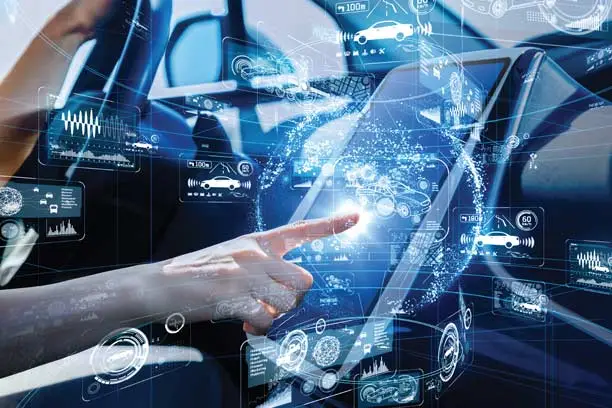11 New Car Technologies: What to Know When Car Shopping


Automotive technology is improving all the time. If you’ve had the same car for a while, you might not be aware of all the new features you can find in today’s newer auto vehicles. So, if you’re thinking about replacing your car with a recent model, you may want to look for one that includes some of the newest technologies.
These 11 technological features can make your time behind the wheel safer and more comfortable.
Even if you’re a diligent driver, distractions in the car or along the road could lead you to drift into another lane. Lane departure monitoring systems typically alert you with a steering wheel vibration or an audible warning if you stray out of your lane. When you change lanes on purpose, you won’t be alerted as long as you’ve flipped on your blinker.
Some vehicles also include lane-keeping assist. If you don’t react to your lane departure warning, they may take over for you until you’re within the lane lines. However, you retain control if you are steering the wheel.
A blind spot detection or blind spot warning (BSW) feature uses sensors and cameras to evaluate the activity around your vehicle. This feature will usually give you an audio or visual alert when there’s a vehicle in your blind spot. The alert will kick in when you activate your turn signal. Vehicles that have this feature also typically have a warning light on the side mirrors. Blind spot detection comes in handy when you aren’t expecting a speeding car to pass you or when you’re in bumper-to-bumper traffic.
Adaptive cruise control (ACC) takes cruise control to the next level. This driver assist technology can turn off cruise control when you get too close to another vehicle, keep you within a preset speed limit and adjust your speed for upcoming bends and turns. Like blind spot detection, it uses cameras and sensors to help you drive safely. You can customize ACC in your car’s settings and choose the features you’d like activated.
Have you ever been distracted in traffic, only to realize the vehicle in front of you has suddenly braked? With automatic emergency braking, your car can help detect a potential collision and react with an automatic emergency brake. This can be useful, especially if you regularly drive in stop-and-go traffic.
It’s tough to see your surroundings when you’re maneuvering your car in reverse. Objects or even people can be below or outside your line of sight. A backup camera can help you see the area around the back of your vehicle better and help you avoid accidents.
This feature has been a beneficial change for driving safety. Since it has been a successful addition, all cars, SUVs, trucks and vans built after May 1, 2018, are required to have a backup camera.
When teens first get their driver’s licenses, they don’t have the years of experience an adult would have behind the wheel. Technology enhancements in new cars can help.
Built-in alert systems can notify you about risky behaviors, such as speeding. Some vehicles even provide parents with a teen driver report. New high-tech features also allow you to limit the volume on the stereo and to prevent motion if the seatbelts aren’t fastened.
It can be nerve-wracking to park on city streets, especially with bicycles and electric scooters rolling up alongside you. Modern car technology features exit warning sensors that alert you if a cyclist or other obstacle is in your path, so you don’t open your car door. Some systems even prevent you from exiting if you ignore the warning.
Tracking technology can lead law enforcement directly to your stolen vehicle, so criminals have a much tougher time getting away with auto theft. But that’s not the only benefit. You can also use this technology to help you find your car in a crowded parking lot using your smartphone.
Keeping your smartphone charged when you’re on the road is a top priority. Many newer cars have wireless charging pads or slots designed to accommodate your phone. With them, you can skip the cord wrangling and be confident you have a full battery charge while you’re on the go.
If you regularly tow a boat or a utility trailer, you know that the process requires precision and skill. Newer towing vehicles offer hitch guidance for a perfect lineup, a hitch view while you’re in motion so you can make sure your trailer is secure and additional cameras and sensors to make it easier for you to maneuver and back up.
There was a time when remote start and keyless entry were trendy features in cars. Now, you can control a new car with your smartphone. On a cold day, you can start your car even if it’s blocks away. You can double-check that you locked the doors without traipsing back across the parking lot. And you can see that your car is secure in an airport parking lot, even if you’re on the other side of the globe.
New car technology can help keep you and your car safe, but it can’t replace the peace of mind that comes with knowing you’re protected if an accident happens. Farm Bureau offers a range of auto insurance coverage options to help you find the best fit for your needs.